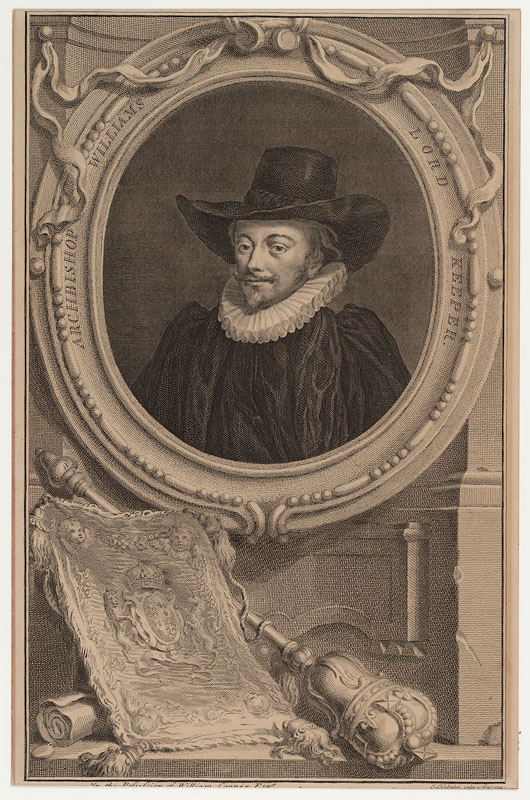- John Williams (Archbishop of York)
Infobox Archbishop of York
honorific-prefix =
name = John Williams
honorific-suffix =

caption = engraving of John Williams byJacobus Houbraken
province =
diocese =
see =
began = 1641
term_end = 1650
predecessor =Richard Neile
successor =Accepted Frewen
ordination =
consecration =
other_post =Bishop of Lincoln ,Lord Chancellor
birth_name =
birth_date =22 March ,1582
birthplace =
death_date =25 March ,1650 (aged 68)
deathplace =
tomb =
nationality =
religion =Church of England
residence =
parents =
spouse =
children =
ocupation =
profession =
alma_mater =
John Williams (
March 22 1582 –March 25 1650 ), was a British clergyman and political advisor to King James I. He served asBishop of Lincoln 1621-1641, Keeper of the Great Seal also known as Lord Keeper orLord Chancellor 1621-1625, andArchbishop of York 1641-1650. He was the last archbishop to serve as lord chancellor.Early life
John Williams,
Bishop of Lincoln , and laterArchbishop of York , was born inAberconwy , Wales and attendedRuthin School before graduating fromSt John's College, Cambridge BA 1601, and MA 1605. He entered the clergy and he first impressed the king by a sermon in 1610. He became the king's chaplain in 1617.Political career
In 1620 he was made Dean of Westminster and was swiftly elevated by King James I to the Bishopric of Lincoln in 1621, as well as being made Keeper of the Great Seal (also known as
Lord Chancellor ). Throughout his political career Williams was identified as a strong supporter of King James. He alienated the Prince of Wales, the future Charles I by disapproving of his ill-fated expedition with the Duke of Buckingham to Madrid. When James I died and was succeeded by Charles I in 1625, Williams was quickly removed from the office ofLord Chancellor , and was prevented from attending Parliament. Though Williams managed to survive Buckingham, who was assassinated in 1628, he remained out of favour. William's liberal attidudes toward the puritans led to a legal battle with the Court of the Star Chamber, and he was suspended from his benefices in 1636, fined, and imprisoned in the Tower until 1640. At that point the Lords forced the King to release him, and Williams resumed his offices and tried to steer a course between the extreme wings of the Church. He was re-imprisoned by Parliament in 1641, but was released on bail in 1642 and went to be with the King in Yorkshire, as well as be enthroned as Archbishop of York, a position to which he had been appointed the previous year. His stay in Yorkshire was brief, however, and he spent the last years of his life in his native north Wales, initially supporting the royalist cause, but eventually coming to an accommodation with the local parliamentarian commander in 1646. He died of quinsy in 1650 whilst staying with his kinsfolk, the Wynns of Gwydir.-
ources
* [http://wbo.llgc.org.uk/en/s-WILL-JOH-1582.htm Welsh Biography Online]
Wikimedia Foundation. 2010.
